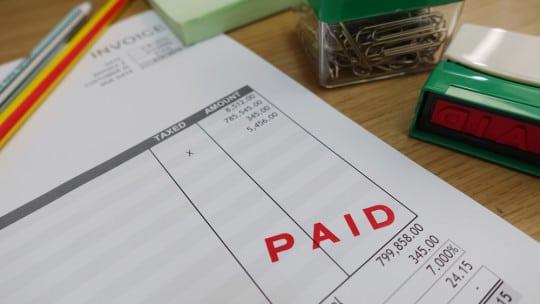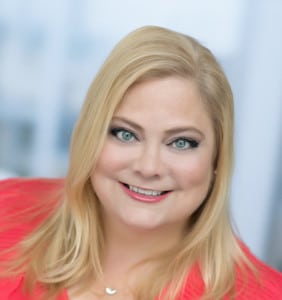
Attend a gathering of communicators and it’s hard to avoid hearing multiple speakers pronounce a sentence of death for organic reach on social media. “Pay to play” has become the name of the game. And it’s become quite a game. A prominent Nigerian blogger has launched a site that, in a way, pays readers to visit it. Linda Ikeji stages weekly drawings where her readers can win as much as $3,200 by visiting the site. The San Francisco Chronicle reports that a very cute corgi named Sneakers commands as much as $1,000 per Instagram ad from pet brands. Not coincidentally Sneakers has some 100,000 followers and is on the low end of animal social media influencers, the paper says. Other hounds with larger followings receive more money per sponsored post; heck, animals tend to do “enormously better” than humans in terms of engagement, Kyla Brennan, CEO of an agency that includes a unit specializing in animal influencers, tells the Chronicle. Another plus: Animals tend to avoid scandal much better than human social influencers.
It’s understandable if the money bandied about above makes you, a communicator, gun-shy about paid social. In fact, many of the examples of sponsoring social posts you’ll read about below had far smaller budgets than those dedicated to Sneakers and her furry cohorts.
As a PR pro, you’ve heard the advice often: Stick to the basics that you learned in Communications 101. It applies in so many situations, including thinking about paid social, according to PR pros we spoke with about the subject. And, yes, all of them have modest budgets for social media.
Think Before You Spend

“Social media is media,” says Stephanie Elsea, VP, communications and marketing, SouthWest Affiliate, American Heart Association, emphasizing the need to use the basic rules of communications when deciding on social media spending. The basics, Elsea says, include: Know your objective, know your audience, have a plan and think about your budget considerations, not only in terms of how much money you’ll spend and where you will spend it, but also where and how you want to expend your effort.
When it comes to allocating human capital for social, Elsea’s shop uses the one-third rule, dedicating about 33% of its time using social media to promote; 33% to share content; and 33% to conversing and engaging in the social conversation, which includes listening. For Elsea, it’s not a “question of whether” to spend on social media but how to do so wisely. The Heart Association has found concentrating spending on Facebook “is worth the investment” as opposed to spreading dollars around to Twitter, Instagram and Snapchat, although periodically it buys Snapchat geofilters when it’s staging live events that attract a young crowd.

Adds Melissa Baratta, SVP at Affect, “Before you put budget behind anything (in social media) think about your goals.” Do you want to “grow your platform, increase traffic to your platform, get a product adopted, advocate a position on a topic or demonstrate third-party credibility?” This last task, demonstrating third-party credibility, is underused, she says; however, “if your brand or a product received favorable coverage” in a major publication you post the article on your site and “put money behind it” as it will likely get many more views than it would have sans money, she says.
Another way the Heart Association boosts its social presence at a minimal cost is by deploying brand ambassadors, Elsea says. Each month the ambassadors, both inside and outside the Association, receive material, such as graphics and blog posts, that sticks to a theme, such as research. The ambassadors then share this material socially, appending it to their personal accounts. The keys to dealing with ambassadors, Elsea says: Be consistent (when you promise to deliver material regularly, do so) and make it “extremely easy” for the ambassadors. Promoting the program constantly is a must, she adds.

Case Studies: Small Spend Has Big Result
Elsea’s unit hoped to get 27 Texas municipalities to adopt compulsory smoke-free ordinances. Its tactics included crafting 27 hyperlocal Facebook ad campaigns along with boosted posts; each campaign was tailored for an individual county. “We’d begin with a small purchase” of $15…if we received positive engagement, “we’d increase the spend.” When engagement was poor, messaging and/or graphics were changed. With this modest spending all 27 county ordinances were approved. Combined reach was 224,524; total website clicks/post engagements was 11,897. “Ads were the clear champion in reaching beyond our current audience,” she says.
A case where paid social didn’t work was when the Association boosted a post for an end-of-year fundraiser called 100 Lives. The post contained a great video that showed 100 people of various ages who had heart disease in less than 60 seconds. The call to action (CTA) was to donate $10 and touch 100 people; the Association received no donations. “We were in love with our video…and wanted people to see it,” Elsea says. Instead, she says, “we should have advertised.” Boosting a post is better for an objective around increasing engagement, such as likes, comments and video views. Ads are preferable, she says, “when you have a strong CTA and/or are trying to generate reach and gain followers.”
Baratta used paid social media to raise awareness for a NYC-based healthcare brand, Axon Health Associates. The tactic was using sponsored content to showcase thought leadership. The ultimate goal of brand awareness was building brand trust and gaining new patients. Axon promoted blog posts and other content to raise brand awareness and build community around the need for its services. Baratta says Facebook users thrive “feeling like they’re part of a community…so your content must make them feel that way.” Even when selling a product on Facebook, she says, users often aren’t asked to buy something, but to join a community where they will receive products and services. Axon spent just $300/month for five months; it also created business profiles on Yelp at $500/month. The result for the Facebook effort: 3,000 ad clicks (content & website) and
3,100 page likes. Yelp gained 539 clicks to the website, 1,251 profile views and 156 new customer leads. Ultimately Axon gained 524 new patients and the total number of patient visits grew every month for five months.
More Tips From Baratta: A small spend can be impactful; prioritize your goals; measure your efforts with “tangible, business-oriented metrics”; evaluate your paid social often, don’t “set it and forget it…look at your ads and change them weekly” if necessary.
[Subscribers: Materials related to working with influencers can be found at the PR Pro Essentials page: prnewsonline.com/prnews-pro-essentials/]
CONTACT: [email protected] [email protected]
